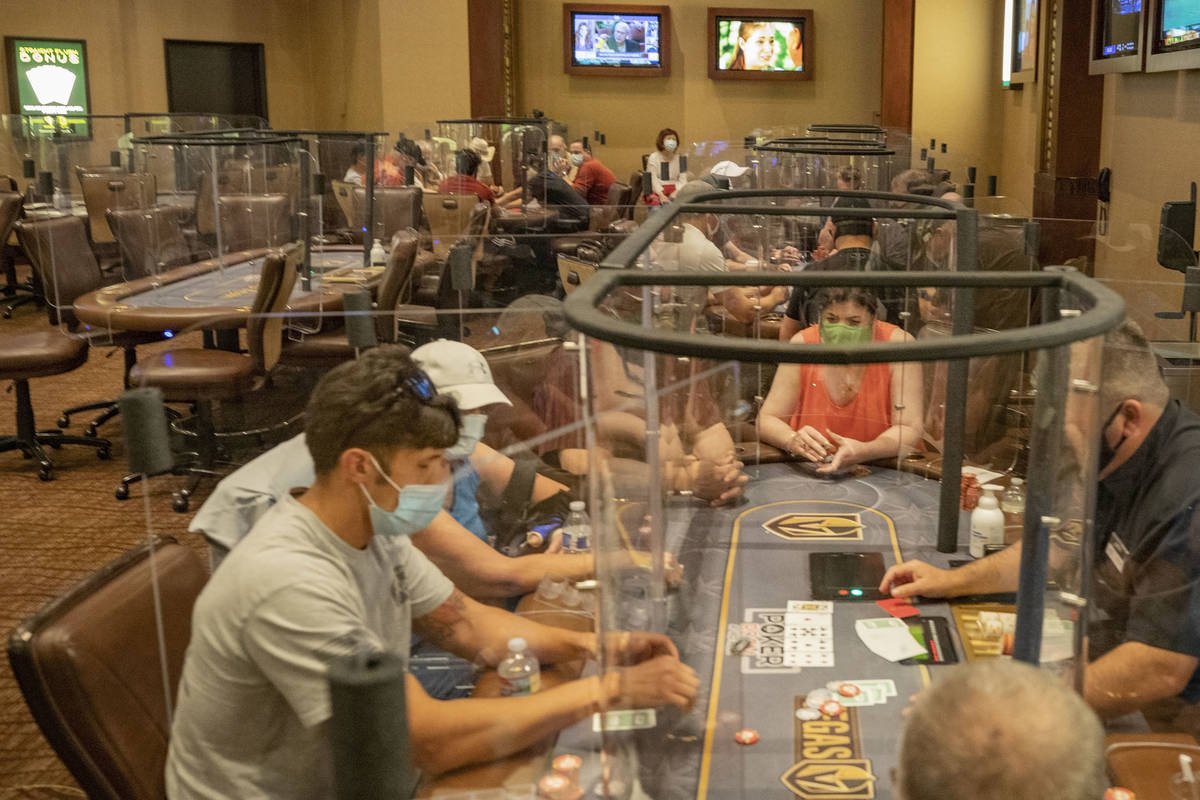Young gamblers are in Las Vegas. Will casinos keep them coming?

There’s a new crowd of big spenders in Las Vegas.
Casinos on and off the Strip have seen a new set of younger customers emerge over the past few months. Operators say this group tends to stay in casinos longer and — more importantly — drop significant cash while there.
As casino operators work to crawl their way out of pandemic-induced financial hardships, many are rushing to convert these new players into loyal customers who will continue to spend money after the health crisis ends.
“There is an opportunity for local and Strip casinos to capitalize on this growing guest segment right now,” said Josh Swissman, founding partner of gaming consulting agency The Strategy Organization. “Until other business segments return and until hometown restrictions are lifted, smart operators should continue to offer promotions and incentives that these younger guests are currently enjoying.”
A new clientele
Executives at a number of gaming companies — including Boyd Gaming Corp., Red Rock Resorts Inc. and Caesars Entertainment Inc. — told investors during second-quarter earnings calls that gamblers 55 and older have been cutting back their visits because of the COVID-19 pandemic.
But foot traffic from younger, high-worth visitors has picked up in their place.
Older customers have historically held some of the most spending power, but companies say these new, young visitors have been throwing around plenty of money inside casinos.
Jay Snowden, CEO of Penn National Gaming, which runs the M Resort and the Tropicana along with a host of regional properties, said during an Aug. 6 earnings call that visitation rates were down in the second quarter, but spend per visit was up 45 percent.
Swissman said these new, young customers are probably a mix of local and drive-in guests who view Las Vegas resorts as one of the few affordable getaways available during the pandemic.
Las Vegas resorts’ average daily room rates in June were $104.07, down 14 percent compared with the previous year, according to the LVCVA.
“Sporting events and live entertainment either don’t exist or occur without the physical presence of fans,” he said via email. “For the drive-in market (particularly from California), there is more to do in Las Vegas than in the guest’s hometown due to ongoing restrictions.”
This crowd also has fewer concerns over the virus than older gamblers and is more willing to travel to a tourism-heavy destination, according to Robert Rippee, director of the Hospitality Lab at UNLV’s International Gaming Institute.
According to a June report from Pew Research Center, 26 percent of those between 18 and 29 years old and 34 percent of people between 30 and 49 years old view the coronavirus outbreak as a major threat to their health, compared with about half of people 65 and older.
Opportunities in the pandemic
Operating in a tourism-driven environment during a pandemic isn’t easy, but companies believe it has presented opportunities for growth.
Boyd Gaming CEO Keith Smith said the company believes it can retain its new customer base after the pandemic is over, even as other entertainment options return.
“We have (these new customers’) information, and therefore, we’re able to not just track them, we’re able to market to them going forward and bring them back into the building,” he told investors during a July 28 call. “We may be getting a larger share of their wallet today (with less entertainment competition), but the point is they’re coming into the building, they’re participating with us, they’re enjoying the product, and we’ll be able to continue to talk to them going forward.”
Executives at Station Casinos’ parent company, Red Rock Resorts, have seen similar visitation trends. CEO Frank Fertitta III said the company is focused on making sure this new influx of young visitors is “sticky” and continues to visit casinos.
“We are very focused on relationship marketing, capturing the information and being able to continue to market to (this younger demographic),” he said. “I don’t know what the future brings, but if we can get some stickiness from (retaining) some of these younger people who are coming into our facilities … it could be a very good thing for us.”
Caesars Entertainment Inc. CEO Tom Reeg said business from customers who aren’t in the company’s loyalty card system has picked up and filled the hole left by the 55-plus demographic who are staying home more during the pandemic.
Reeg is confident the company’s business levels are sustainable.
“It is undoubtedly true that we have benefited from customers that have no other entertainment (options),” he said. “I think we’re going to keep some of that unrated business, and I think the 55-plus will come back. So I think regional (business) is very strong now, and going to get stronger.”
Customer ‘stickiness’ in question
But many of the tailwinds that boosted visitors’ spending are set to end in the near term, if they haven’t already.
This includes pent-up demand, stimulus checks and additional unemployment insurance benefits, according to Rippee.
“The harsh reality … is that the $600 has ended, and now (these travelers) must survive on limited employment, unemployment or find other employment,” he said.
Swissman also pointed out that as other entertainment options like concerts and live sports return, visitors from neighboring states will have less reason to travel to Nevada.
“Whenever that occurs, it will serve as a distraction from the focus Vegas is enjoying right now,” he said.
Still, Rippee expects this young demographic will play a major role in Las Vegas’ economic recovery.
“The millennial and Gen Z are the largest demographic in the country today,” he said. “I would place a greater focus on younger generations becoming the mass customer for the destination in a post-pandemic Las Vegas.”
Contact Bailey Schulz at bschulz@reviewjournal.com or 702-383-0233. Follow @bailey_schulz on Twitter.